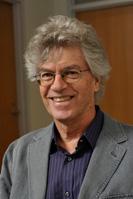| AMMCS-2013 Venue: Wilfrid Laurier
University Campus in Waterloo, Canada |
|
|
|
|
AMMCS-2013 Plenary Talk
Phylogenetic Analysis of the Musical Rhythms of the World
Godfried T. Toussaint
Abstract: The application of computational-mathematical tools to the analysis of symbolically notated musical rhythms of the world informs musicological issues such as whether one group of rhythms is more complex than another, whether one family of rhythms possesses an underlying metrical hierarchy, or how an evolutionary phylogeny of musical rhythms may be constructed.
Recent results on these problems will be illustrated with examples. To submit rhythms to a phylogenetic analysis, a measure of similarity between rhythms is usually employed. Two fundamental approaches to measuring the similarity between rhythms are compared: a feature-based technique and a transformation method. In the former procedure, statistical and/or structural features are computed from a suitable representation of the rhythms, thus representing them as points in a feature space. Two rhythms are considered to be similar if the distance between their corresponding points in this feature space is small.
In the latter strategy a rhythm is represented as a binary sequence of symbols denoting onsets (sounds) and rests (silences), and a distance measure called the edit-distance is used. The edit distance between two rhythms is the minimum number of mutations required to transform one rhythm to the other. Here the mutations consist of insertions, deletions, and substitutions of onsets and rests.
A phylogenetic analysis using the BioNJ algorithm from the SplitsTree-4 software package, incorporating the edit distance, applied to several collections of the musical rhythms practiced in several cultures around the globe, yields new insights into the paradigmatic roles played by the most salient rhythms.

Godfried T. Toussaint is a Research Professor of Computer Science at New York
University Abu Dhabi in Abu Dhabi, United Arab Emirates. He is also an affiliate
researcher in the Computer Science and Artificial Intelligence Laboratory at the
Massachusetts Institute of Technology in Cambridge, MA, USA. For many years he
taught and did research in the School of Computer Science at McGill University in
Montreal, in the areas of information theory, pattern recognition, textile-pattern analysis
and design, computational geometry, machine learning, music information retrieval,
and computational music theory. In 2005 he became a researcher in the Centre for
Interdisciplinary Research in Music Media and Technology, in the Schulich School of
Music at McGill University, in Montreal, Canada.
Dr. Toussaint is a founder and co-founder of
several annual international conferences and workshops, including the ACM Symposium
on Computational Geometry, and the Canadian Conference on Computational Geometry.
He is an editor of several journals, including Computational Geometry: Theory and
Applications, the International Journal of Computational Geometry and Applications,
ISRN Geometry, and the Journal of Mathematics and the Arts. He is the recipient of
several distinguished awards including a Killam Fellowship from the Canada Council for
the Arts, and a Radcliffe Fellowship from Harvard University, where he spent one year at
the Radcliffe Institute for Advanced Study, and one year in the Music Department. His
research on the phylogenetic analysis of musical rhythms has been reported in several
media, and was the focus of two Canadian television programs. He is the author of more
than 390 publications.
Latest Book: The Geometry of Musical Rhythm, Chapman-Hall/CRC Press, January,
2013.
Homepage
|